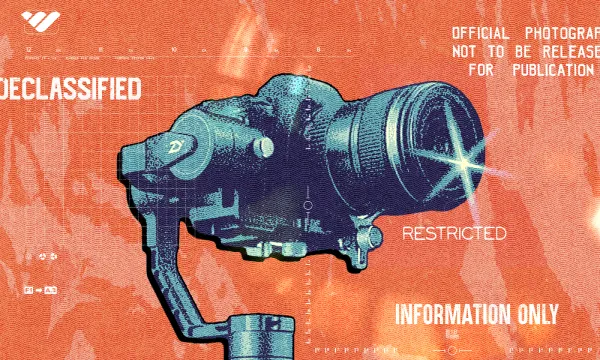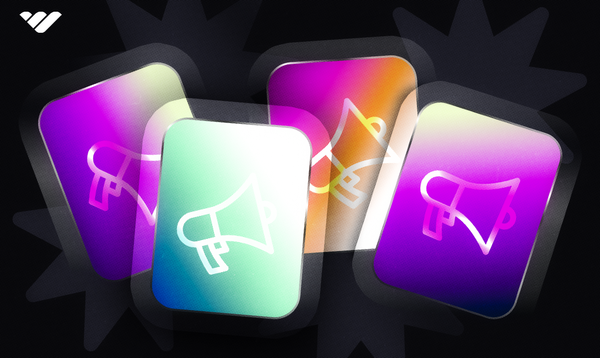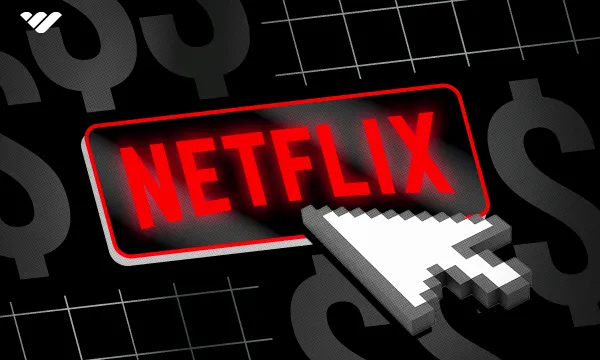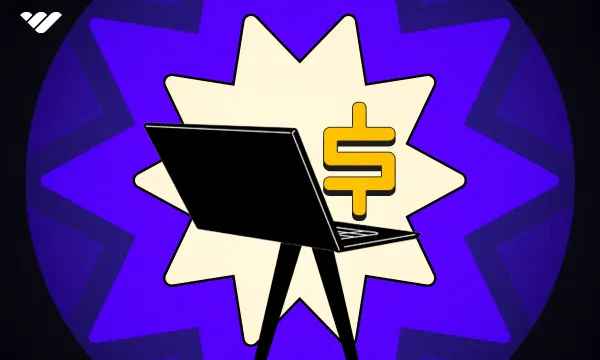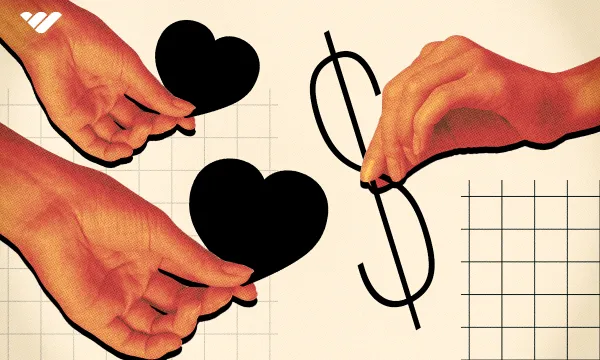If you asked kids about their dream jobs two decades ago, most would have said things like: Pilot. Doctor. Firefighter. Now, YouTuber, influencer, and blogger are popular choices. And that’s no surprise—we live in a creator economy.
Witnessing individuals making millions doing what they love has changed the way young people perceive the nine-to-five life. The creator economy empowers individuals to establish their own terms, paving the way for a new era of entrepreneurship.
Today, there are over 200 million creators worldwide, and the creator economy could approach half a trillion dollars by 2027. When we put these numbers into perspective, there’s no doubt that the rise of the creator economy has brought democratization of creative industries. But what is the creator economy, who is driving it, and what does this mean for businesses?
What is the Creator Economy, and How are Individuals Participating in it?
The creator economy is a new economic landscape in which creators produce and distribute content across digital platforms to promote products or services to their audience in order to monetize their efforts.
The emergence of the creator economy brought a paradigm shift—it provided people with the opportunity to monetize their skills, talents, and passions through the Internet. As a result, people changed their perceptions and started participating in a model that allowed them to build prosperous careers without the limitations of the traditional employment system.
But who is part of the creator economy? Unlike the seemingly simple concept of “influencers in front of their cameras,” the creator economy is a complex ecosystem that involves creators, audiences, digital platforms, companies, marketers, and agencies, interconnected through the exchange of content, money, or goods and services.
What makes the creator economy so impactful is the number of creators involved, making it a true powerhouse. According to Linktree, there are five groups of creators based on their audience size:
- Recreational (with 0–1K followers): 23 million
- Semi-Pro (with 1–10K followers): 139 million
- Pro (with 10K–100K followers): 41 million
- Expert (with 100K–1 million followers): 2 million
- Expert+ (with 1 million followers and above): 2 million
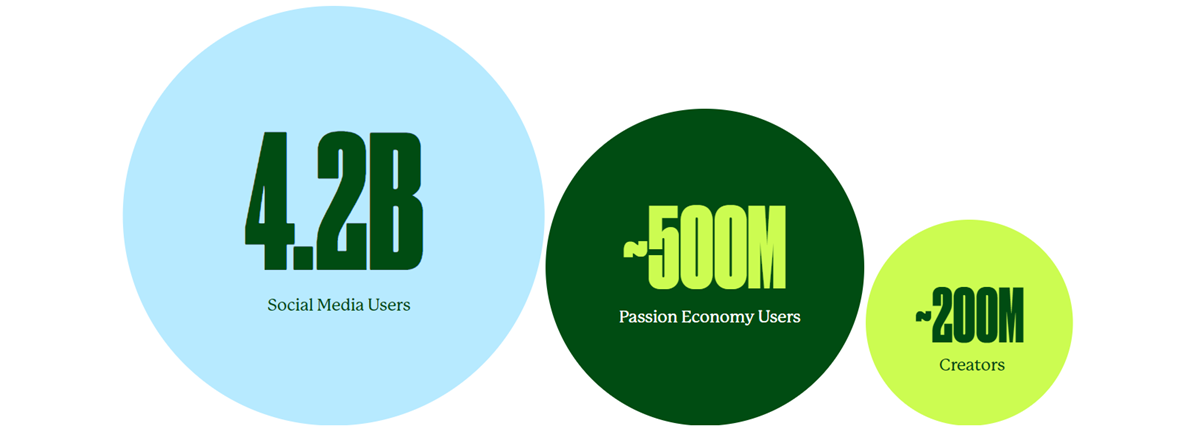
Moreover, creators have the power to tap into wealthier consumers’ purchasing decisions. Research shows that a person’s wealth is directly proportional to the likelihood of them purchasing something based on an influencer’s recommendation. One-fifth (19.57%) of those earning over $100,000 said they were “very likely” to buy an influencer-recommended product.
There are different monetization strategies in the creator economy, including online courses, ebooks, communities, live streaming, newsletters, podcasting, influencer marketing, etc. Digital products gained a strong foothold in the creator economy as a great way to provide creators with an additional revenue stream or source of passive income.
What makes digital products so popular among creators is the possibility to create them once and sell them repeatedly with little to no alterations needed. Digital products include ebooks, online courses, digital templates, digital art, printable digital products, software, digital services, licensed digital content, digital memberships, and so much more.
The most sold digital products by creators are courses, with 35,7%, followed by ebooks with 7.3%, cookbooks with 3.8%, printables with 3.6%, and templates with 1.3%, according to Influencers.club. Lifestyle (50.6%) is the top creator niche that sells digital products, followed by Arts & Entertainment (39.4%) and Business (33.3%).
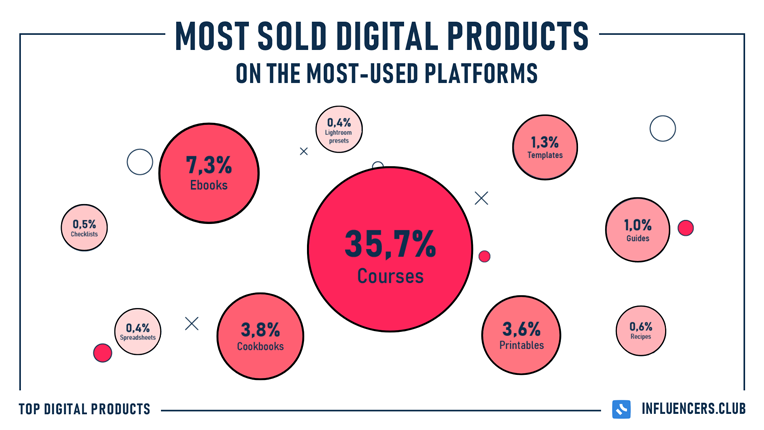
The State of the Creator Economy
The pandemic fueled the creative economy. With people stuck at home, the number of people creating (and consuming!) content has mushroomed. According to Adobe’s study “Future of Creativity,” during the pandemic, the number of creators who joined the creator economy went through the roof—over 165 million creators joined the creator economy in two years (from 2020 to 2022).
If we zoom in, we can see that Millennials are the driving force of the creative economy. Millennials represent 42% of the creator economy. Here’s the thing: millennials have a strong preference for entrepreneurship—52.03% of millennials would prefer making $100,000 a year working for themselves rather than $200,000 a year working for a company.
While the allure of the creator economy is undeniable, one must ask: What makes creators so successful? It’s clear that only having the blue check can’t buy organic engagement. According to Deloitte, 77% of consumers follow creators out of a shared interest or desire to learn something new.
However, it’s not all sunshine and roses. The harsh reality is that when creators kickstart their journeys, they are struggling to monetize their content. Data from Linktree shows that 59% of beginner creators haven’t monetized yet, and 35% have monetized but earned below-average income.
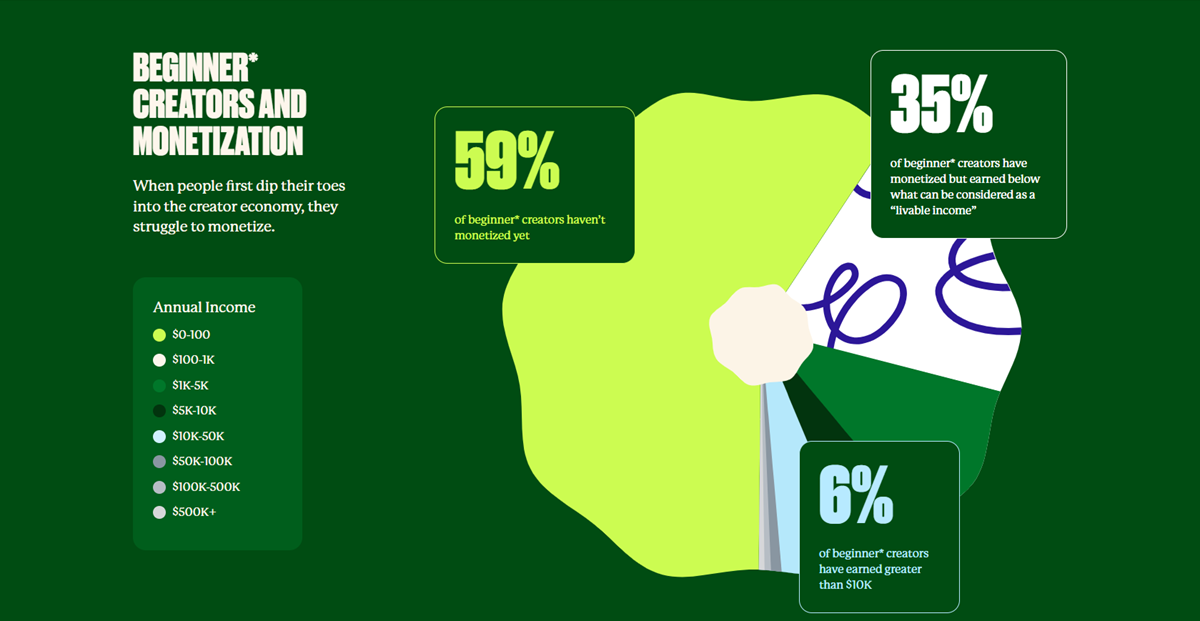
Once creators grow their audience and specialize in one niche, things start to look up. Data shows 62% of niche creators think specializing is helpful for engagement and reach, and 7% of niche creators earn more than $100K per year.
What Will Shape the Creator Economy in 2024?
The creator economy is in a state of flux. While it’s never been a more exciting time to be a part of the creator economy, creators are also facing many challenges due to the macroeconomic environment.
The headwinds brought by the high inflation and cautious consumer spending have impacted marketing budgets, which affected creators as well. Now, the question is: what will shape the creator economy in 2024 and beyond? Let’s look at some of the trends and predictions.
Creators are looking for ways to expand their influence beyond social media
One of the biggest headaches for creators is how to expand their reach through different channels. Social media has been the main driver of the creator economy so far. However, being overly reliant on social media algorithms has turned out to be troublesome for creators. As a result, creators are on the lookout for new channels that will bring them new revenue streams. Data from eMarketer shows that 64% of US creators who also use nonsocial platforms have monetized their secondary channels. The roughly 2 in 5 creators who rely solely on social media are at the mercy of social media algorithms that are subject to increasing scrutiny and frequent changes.
Creators are gaining power in the media ecosystem
As the creator economy gained steam, creators started to move towards entrepreneurship. The reason? Creators are aware of the influence they have on their audience. To make the most out of it, they move towards becoming founders and starting their own businesses. This way, they solidify their position in the media ecosystem. Creators began shifting their focus from being paid by platforms such as YouTube to being paid by their audiences. This allows them to focus on creating a community and offering the highest quality content instead of creating clickbait content to get a bigger ad revenue share.
The need for ROI will drive brands to focus on proven concepts rather than experiments
The macroeconomic challenges have shrunk the room for maneuvering—brands expect results, rather than experiments. As a consequence, we can expect a bigger focus on creators and influencers who bring measurable ROI.
“One area I think is ripe for opportunity are the influencers who convert but aren’t household names. Amazon’s top live sellers aren’t going viral on TikTok or getting covered in trade magazines, but they are moving millions of dollars in merchandise. In 2024, experimentation is out, ROI is in. So as marketers look to focus on lower-funnel results, brands need to look past the trendy names and tap into reliable influencers who know how to sell,” said Lia Haberman, a CMO, advisor, and educator.
Does that mean that mega influencers are out? Not really—they will never be out, especially for brands that can afford them. However, others will focus on influencers and creators that can bring them results quickly.
“Of course, there will be the handful of names that are worth the halo effect of working with them, such as Alix Earle or Kylie Jenner, but 2024 will be the year of the slightly less glamorous but ROI-positive livestream seller and the small creator who can help brands supplement their content output,” Haberman said.
The rise of AI will bring an increasing shift toward interactivity
The AI-fueled frenzy is everywhere around us, and the creator economy is no exception. The rise of AI tools and technologies will impact content creation as we know it today. The question is: Will AI put creators in jeopardy? The short answer is: no. People will always crave authenticity. However, creators must stay up-to-date with the latest developments to be able to cater to their audience's needs. We can expect to see AI-powered tools that allow creators to curate better and more engaging experiences for their audiences. This will open new opportunities for creators.
Creators are still struggling to be more visible.
Despite all the opportunities from the fast-growing creator economy realm, creators are still struggling to be seen. The competition is fierce, and standing out on the never-ending social media feed is harder than ever. When asked about their top challenges as content creators, 54% of full-time and 60% of part-time creators identify “getting my content found” as their top concern. Other challenges include monetizing content, promoting the business, and publishing regularly. That said, platforms that can solve these challenges for creators will, without a doubt, witness success in 2024 and beyond.
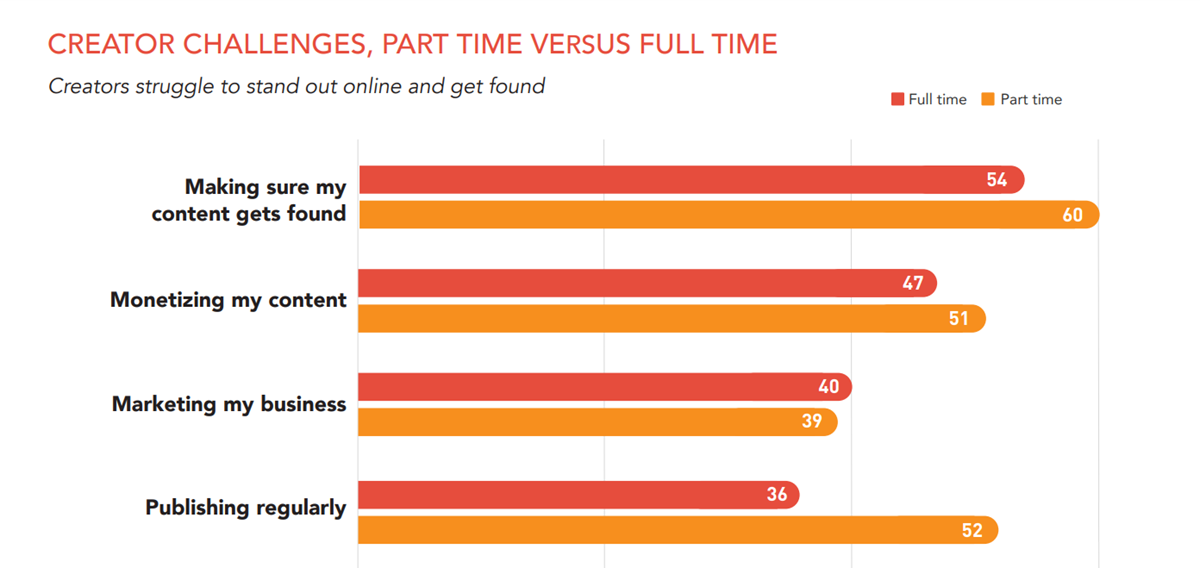
How can Businesses Take Advantage of the Creator Economy?
The evolving creator economy space has posed challenges for businesses as well. Brands must start thinking about long-term connections with their audience and not just one-off influencer marketing campaigns.
This shift has forced brands to rethink their long-term strategy and find ways to include creators as brand ambassadors. This way, they can build solid relationships with creators and influencers but, at the same time, create a stronger community. Industry experts agree that brands that build strategic partnerships with creators will gain a significant competitive advantage.
Brands should tap into the creator economy to grow their audience
The demand for content is higher than ever. Brands are grappling to produce high-quality content to engage their customers. Here’s where creators come into the picture. The creator economy expansion has raised the need for agencies that work with nano and micro-influencers and creators since brands are starting to work with them more frequently.
Creators can help businesses stand out in the cookie apocalypse
The long-feared cookie apocalypse has finally arrived. Google has restricted third-party cookies for 1% of Chrome users to facilitate testing. The plan is to ramp up this number to 100% of users from Q3 2024. Now, brands are scrambling to find ways to replace their customer acquisition strategies with tactics that will bring measurable results. One way to achieve this is to work with content creators.
"To succeed in an approaching cookieless world, brands should prioritize delivering authentic value and captivating experiences to gain the trust of their audience through influencer partnerships,” said Tina Seitzinger, senior director of influencer and paid social at Vericast.
Brands should leverage the rise of social commerce
Social commerce worldwide revenue reached 724 billion U.S. dollars in 2022 and is forecasted to surpass six trillion U.S. dollars by 2030, according to Statista. It’s clear that social media platforms can be a goldmine for businesses.
“Brands should keep an eye on the growing trend of social commerce, with platforms like TikTok investing heavily in this space, and interactive shopping experiences expected to expand as a means for consumer engagement,” said Seitzinger.
Brands can create a more authentic, customer-centric approach to marketing
As we are entering the era of AI-generated visuals, videos, and copies, customers are hungry for authentic content and genuine human connection. This gives creators an edge over AI-generated content, and it will help brands boost the bottom line. Seitzinger explained that embracing these opportunities and integrating influencer marketing across all touchpoints and channels will give brands the ability to tap into the creativity and human connection influencers generate while also driving full-funnel impact in a highly competitive environment.
What are the Top Creator Platforms?
The fast-paced growth of the creator economy led to a surge in the number of platforms specializing in different content creation categories:
- Video/Streaming
Video is one of the most engaging content formats nowadays. Data from Wyzowl shows that 82% of people have been convinced to buy a product or service by watching a video. As a result, creators are dedicating more time to video content creation or live streaming through platforms such as YouTube, TikTok, Twitch, Instagram Live, and Facebook Live. - Photography/Graphic Design
Instagram, Snapchat, and Pinterest are some of the platforms popular among photographers and graphic designers. Instagram reached 1.21 billion monthly active users in 2021, making up over 28% of the world's internet users. According to Statista, this number will increase to 1.44 billion monthly active users by 2025. - Music/Podcast
Creators in the music and podcast fields are often using platforms such as iTunes, Spotify, Pandora, and Soundcloud. The number of podcast listeners worldwide has increased and is predicted to rise even further. In 2023, the number of podcast listeners worldwide amounted to 464.7 million internet users. - Writing
Writers are using platforms such as Twitter/X, Medium, Quora, and Substack to share their thoughts, articles, or newsletters with a wider audience. Despite all the ups and downs related to the rebranding, there were an estimated 415 million X/Twitter users worldwide in 2023. - Digital products
The proliferation of digital products in the creator economy created the need for dedicated platforms for selling and buying digital products. What does that mean? Think Amazon for digital products.
Whop is a dedicated marketplace for digital products, allowing creators to monetize their skills. One of the biggest benefits of selling your digital assets through an online marketplace is the exposure to a pre-established audience. Unlike social media, where users are scrolling through the feed to fill in their free time, visitors browsing through a digital marketplace are ready to make a purchase.
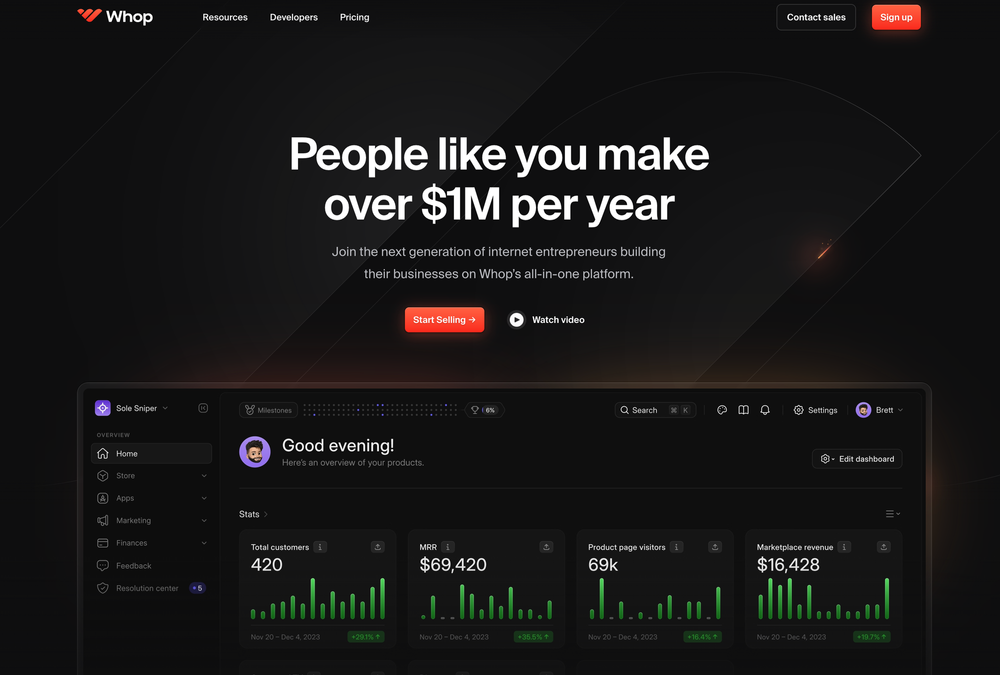
Filling in the Digital Products Gap in the Creator Economy
There’s a gap in the digital products segment in the creator economy. Unlike selling physical products, creators are struggling to sell their digital products through social media. What’s more, a significant chunk of customers is still skeptical when it comes to shopping directly through social media platforms. Almost 4 in 10 shoppers hold back from shopping on social media over concerns about how platforms manage personal data.
Whop is on a quest to fill the gap and provide creators with the best platform to sell their digital products. It’s a one-stop solution for anyone looking to participate in the digital economy. What makes Whop different from other marketplaces? Whop is focused on customers and creators looking to buy and sell digital products.
Besides this, Whop offers a different selling experience and product discovery engine. The no-code page builder allows sellers to start designing their product page and start selling almost instantly. Whop sellers get access to promotion and CRM tools and a detailed analytics dashboard. On the other hand, buyers get a personalized customer experience thanks to the recommendation algorithm, visualizations for new product discovery, and a portal for managing all purchases and subscriptions.
Ready to start capitalizing on your skills? If you are looking for ways to sell your digital products but you’re still not sure what the best marketplace is, check out Whop. Building your store takes less than 10 minutes, so sign up to Whop and start selling your digital products today.
